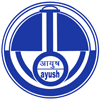Manuscripts

Tibb Nabawi (طب نبوی )
Introductory
| S.NO : | 4637 | AMAR ID : | AMAR/MS/4637 |
|---|---|---|---|
| TITLE OF THE MANUSCRIPT : | Tibb Nabawi (طب نبوی ) | SOURCE LOCATION : | Ibn Sina Academy of Medieval Medicine and Sciences (IAMMS), Aligarh, UP, India |
| PLACE & STATE : | Uttar Pradesh | ACCESSION NO. AT SOURCE : | |
| ACCESSION NO.AT NIIMH, HYDERBAD : | 131 |
Technical
| OTHER TITLE : | INA/ | AUTHOR NAME : | /INA |
|---|---|---|---|
| CO-AUTHOR NAME : | INA | REDACTOR'S NAME : | INA |
| COMMENTATOR NAME : | NAME OF THE COMMENTARY : | ||
| LANGUAGE OF THE COMMENTATOR: | AUTHOR DATE : | ||
| COMMENTATOR DATE : | SCRIBE : | ||
| SCRIBE DATE AND PLACE : | AYUSH SYSTEM : | Unani | |
| SUBJECT: | Therapeutics | LANGUAGE : | Urdu |
| SCRIPT : | Persian |
Textual
| AUTHOR'S BEGINNING SENTENCE (UNICODE)/(DIACRITICAL) : | Fehrist Tibb Nabwi ke ilaj ba advia/ | ||
|---|---|---|---|
| SCRIBE'S BEGINNING SENTENCE (UNICODE)/(DIACRITICAL) : | / | ||
| AUTHOR'S ENDING SENTENCE (UNICODE)/(DIACRITICAL) : | tammat tamam shud kare man nizam shud/ | ||
| SCRIBES ENDING SENTENCE (UNICODE)/(DIACRITICAL) : | /INA | ||
| COLOPHON (UNICODE)/(DIACRITICAL) : | / | CHAPERTIZATION: | Chapterised |
| EXTENT : | Complete | ||
| REMARKS : | Red letters ware seen in the manuscript especially to highlight the chapters | ||
Physical
| MATERIAL : | SIZE : | ||
|---|---|---|---|
| No. of FOLIOS : | 53 | No. of PAGES : | 106 |
| No. of LINES PER FOLIOS : | No. of LINES PER PAGE: | 17 | |
| No. of LETTERS PER LINE : | 16 | GRANTHAMANA : | |
| MISSING FOLIOS : | ILLUSTRATIONS : | ||
| CONDITION : | Good, Readable |
Catalogue
| CATALOGUE STATUS : | CATALOGUE MSS.NUMBER : | ||
|---|---|---|---|
| CATALOGUE TITLE : | INA | CATALOGUE PART : | INA |
| CATALOGUE VOLUME : | INA | CATALOGUE EDITOR: | INA |
| CATALOGUE PUBLISHER : | INA | CATALOGUE YEAR OF PUBLICATION : | INA |
| CATALOGUE ADDITIONAL DETAILS : | INA |
Publication Details
| PUBLICATION STATUS : | PUBLICATION LANGUAGE : | INA | |
|---|---|---|---|
| PUBLICATION AVAILABILITY : | INA | PUBLICATION EDITOR : | |
| PUBLICATION TRANSLATOR : | INA | PUBLICATION PUBLISHER: | |
| PUBLICATION YEAR: | PUBLICATION PLACE : | ||
| ABOUT MANUSCRIPT : | Tibb Nabawi, also known as Prophetic Medicine or Islamic Medicine, refers to the medical practices and advice derived from the teachings and practices of the Islamic prophet Muhammad (peace be upon him). These teachings encompass various aspects of health, hygiene, nutrition, and general well-being, as reported in authentic hadiths (sayings) of Prophet Muhammad. The concept of Tibb Nabawi is an integral part of traditional Islamic teachings and culture. It covers both physical and spiritual aspects of healing, emphasizing the importance of a holistic approach to health. The remedies and practices described in Tibb Nabawi are believed to have been divinely inspired and have been passed down through generations. Examples of Tibb Nabawi practices include: Dietary Guidelines: Prophet Muhammad encouraged a balanced and moderate diet, promoting the consumption of natural and wholesome foods. He advocated the use of foods like honey, dates, olives, and figs, which are considered benefic Hygiene: The Prophet stressed the importance of personal hygiene, such as regular washing and cleanliness, as a means to prevent illness and maintain good health. Cupping Therapy: Cupping, or 'Al-Hijama' is a practice where cups are placed on the skin to create a vacuum, drawing out toxins and promoting blood circulation. It is a common practice in Tibb Nabawi. Black Seed (Nigella Sativa): The black seed is highly regarded in Tibb Nabawi for its potential health benefits. It is mentioned in various hadiths and is believed to have healing properties. It's important to note that while Tibb Nabawi holds significant cultural and religious value for Muslims, it is not considered a substitute for modern medical practices or professional healthcare. Muslims are encouraged to seek medical advice and treatment from qualified healthcare professionals when needed. As with any traditional or alternative medical practice, it's essential to approach them with an open mind and consult with healthcare experts to ense safe and effective usage, especially in the context of modern medical standards and practices | ||
Digitization Status
| DIGITIZED BY : | CCRAS-NIIMH | DIGITIZATION DATE : | March 2023 |
|---|
